September Monthly Agenda
Greetings. There are two workdays scheduled for September, and it looks like I may have volunteers from Aurora University on the 23rd. So if anyone wants to come out and help supervise, that would be awesome; there are several activities that need to be done - from seed collecting, cutting honeysuckle, and building a brush pile. Meeting location will be at the upper parking lot.
For the workday on the 30th, I'll be cutting resprouts in G1.4.3, mostly keeping ash and callery pear out of the prairie. There is some larger honeysuckle in the adjacent workzone if you prefer something bigger to tackle. Meeting location will be at the lower parking lot.
- Sep 23rd, 9 am - noon
- Sep 30th, 9 am - noon
On Sunday 24th is the annual Harvest of the Acorn Moon festival at Oakhurst, from noon to 3pm. This is mostly geared towards kids, but I'll be present.
Okay, so I am ten days late with this newsletter. If anyone came out to the workday on the 2nd and noticed I wasn't there, that's because Robb posted my start time as 8am and not 9am.
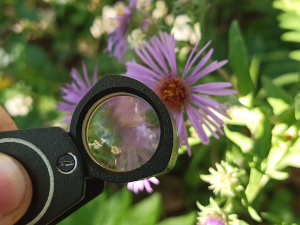
Surveys
I plan to conduct several plants survey across the the G1 and W1 units, covering as many of the workzones as possible, and especially those not surveyed before. For new workzones,the initial survey provides me with a baseline list of species present before any restoration work has occurred. For active workzones, they detect the appearance of new species as result of any seeding efforts.
With the contracted teasel spraying, it is also important to reassess the workzones to see which species may have be harmed by overspray, and are no longer present. That is to be expected, and at this time, getting the teasel population under control is more important.
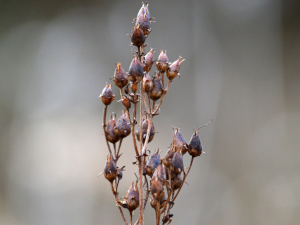
Seed Harvest
When I started volunteering at Oakhurst, prairie wildflowers were few and far between, and certainly not enough to harvest. This year should see a bumper crop of yellow coneflower from the the bioswale (G1.1.1), along with purple prairie clover and wetland sedges. Workzone G1.1.3 still has plenty of monarda and some foxglove beardstongue to collect, in spite of the teasel control. Tall coreopsis and cream gentian can be found across various areas, and F2.4.1 has a nice supply of brown eyed susan.
For the woodland areas, I usually collect Joe Pye Weed, bottlebrush grass and white snakeroot, mainly because they are the easiest to harvest and broadcast. Most of this will go to F4.4 which is looking a little bare after clearing the buckthorn last year.
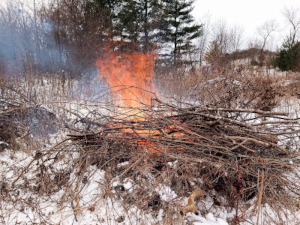
Brush Pile Build
If there is a good turn out of student volunteers on the 23rd, then I may utilize their young muscles to drag brush out of workzone F4.4, away from the pines and dead ash. All the buckthorn was cut last winter, so this is prep work for burning this winter. We'll be utilizing an old burn scar, and the goal is to clear everything this winter.
Last Month Review
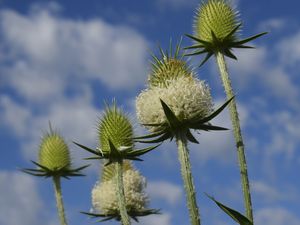
Teasel Fest
It was just me for this year's teasel fest, but I was able to clear most of the teasel in just four workdays. It would have been less, but I found another teasel stand on the south end of the lake. Most of the other populations were located around brush, usually dogwood or willow, which made it harder for the contractor to locate and treat the rosettes.
I will most likely request the brushsaw to cut them down before spring and the next round of herbicide.
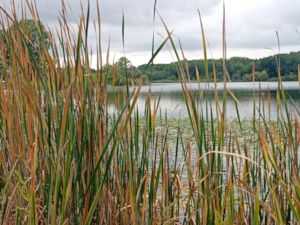
Cattails and Giant Reed
I finally got around to re-spraying the cattails and giant reed in W1.3.2 that I cut earlier in the year. Fortunately, the cattail hadn't fully recovered from being cut to waist height, although the giant reed had bounced back. Probably shouldn't have waited too long. I used a much higher concentration of glyphosate this time, probably around 5-7%. So we'll see what that does.
Rudbeckia
So there is a patch of Rudbeckia along the lakeside that I like to harvest, and always referred to as black eyed susan. However, on closer inspection while it was flowering, I realized it is not the Rudbekia hirta I thought it was. So which one is it?
There are actually several different species of Rudbeckia, most of which go by the common name of susan. At Oakhurst, you can find at least four different species. If all you have are photos of the flowers, they can be a little tricky to tell apart, especially if you don't have a sense of their actual size.

As with many members of the aster family, you really need to inspect the different parts of the plant, such as the leaves, petioles, and stems, and pay attention to the hairs. It is also not enough to look at just one leaf, but instead, look at leaves at the top and bottom of the stem. Leaves can vary in the asters; a lower leaf may be larger, lobed or have a petiole, whereas an upper leaf smaller, unlobed and lack a petiole (sesile). So let's delve a little deeper into the Rudbeckias.
Rudbeckia hirta
This is the plant we generally refer to a Black Eyed Susan, and is an annual or biennial that typically blooms in early summer. By September, many plants has gone to seed with the leaves shriveled up. That said, there may be individuals that decide to bloom in late summer. The word hirta actually means hairy, and not surprisingly the leaves, stems and floral bracts are covered with stiff bristly hairs; while most other Rudbeckias also have hairs, this one goes the extra mile and is especially fuzzy. Leaves are lance-shaped, never lobed, with margins that are sparsely toothed. The plant is a foot or two in height.



Rudbeckia triloba
This is the perennial we refer to a Brown Eyed Susan, and as the botanical name suggests, some of the leaves have three lobes. This is especially true for leaves lower on stem, and for young plants (which can easily be mistaken a young giant ragweed). However, the lobed leaves are usually lost later on in the season. Probably the best ID is the bushy appearance due to its many branched stems, and its numerous smaller flowers. The petals are oval in shape, about half as long as they are wide, and number less than 12; other Rudbeckias tend to have flowers with longer and more numerous petals. Plant blooms later in the season, from Aug into September. Both stems and leaves have hairs that are rough to touch.
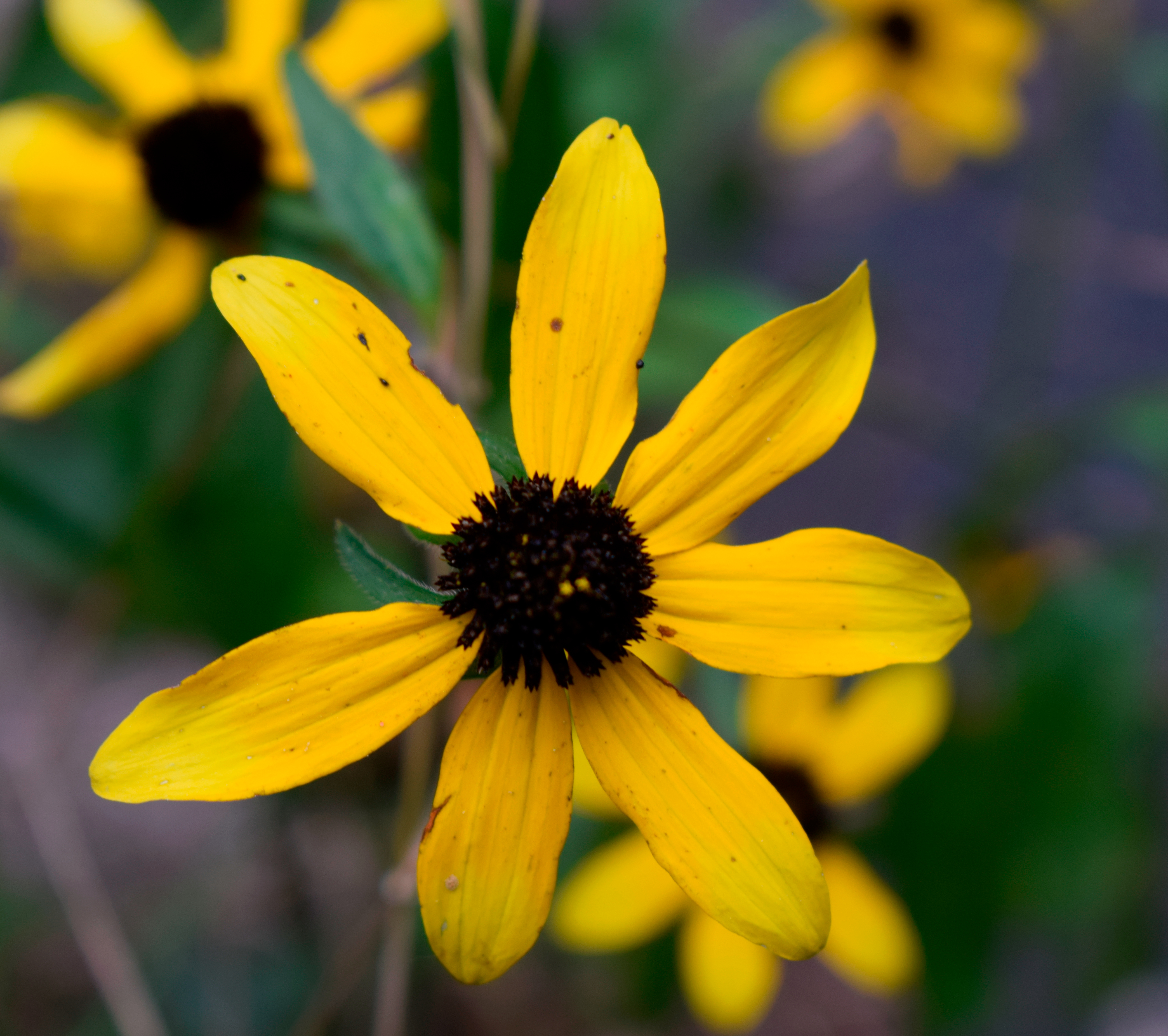
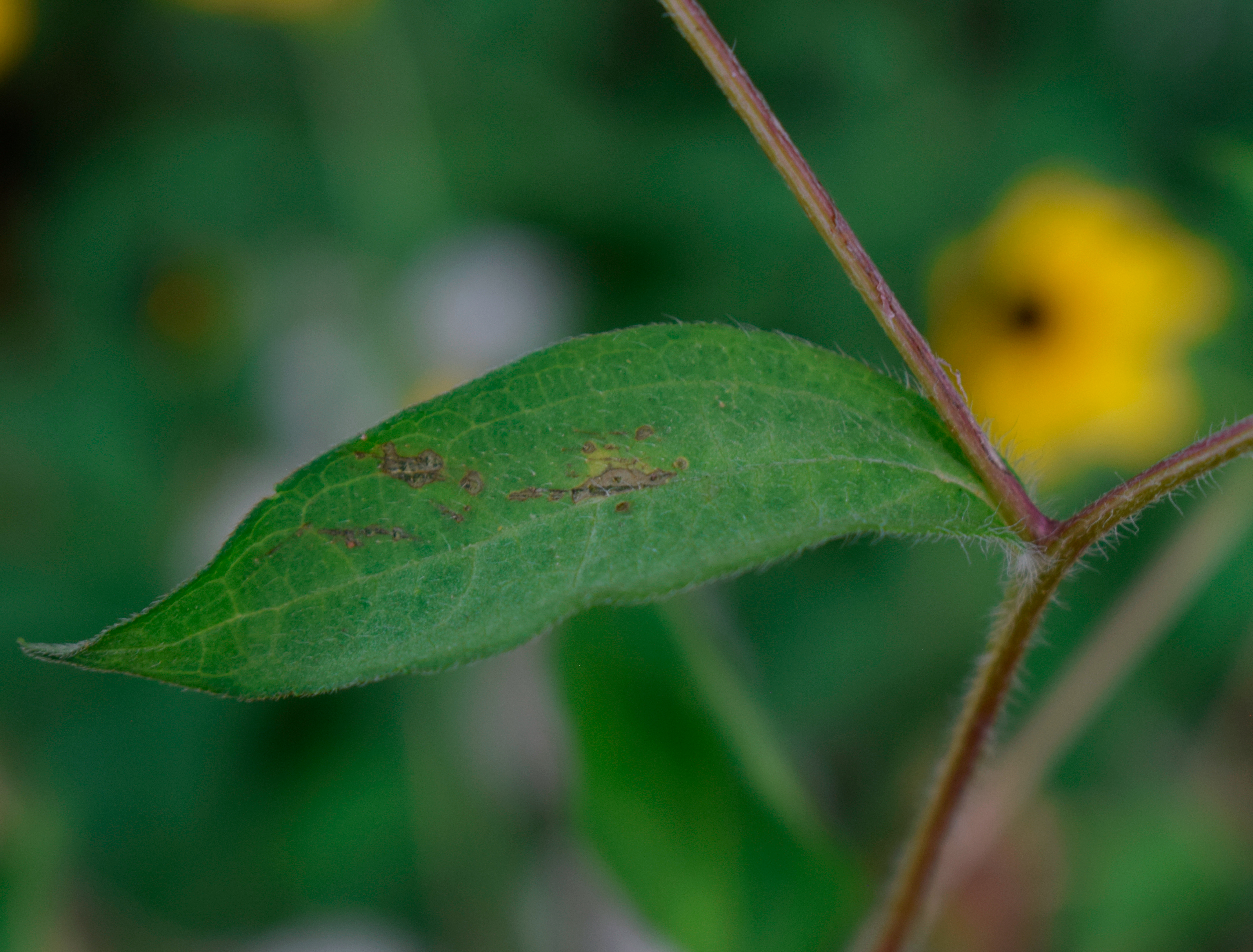
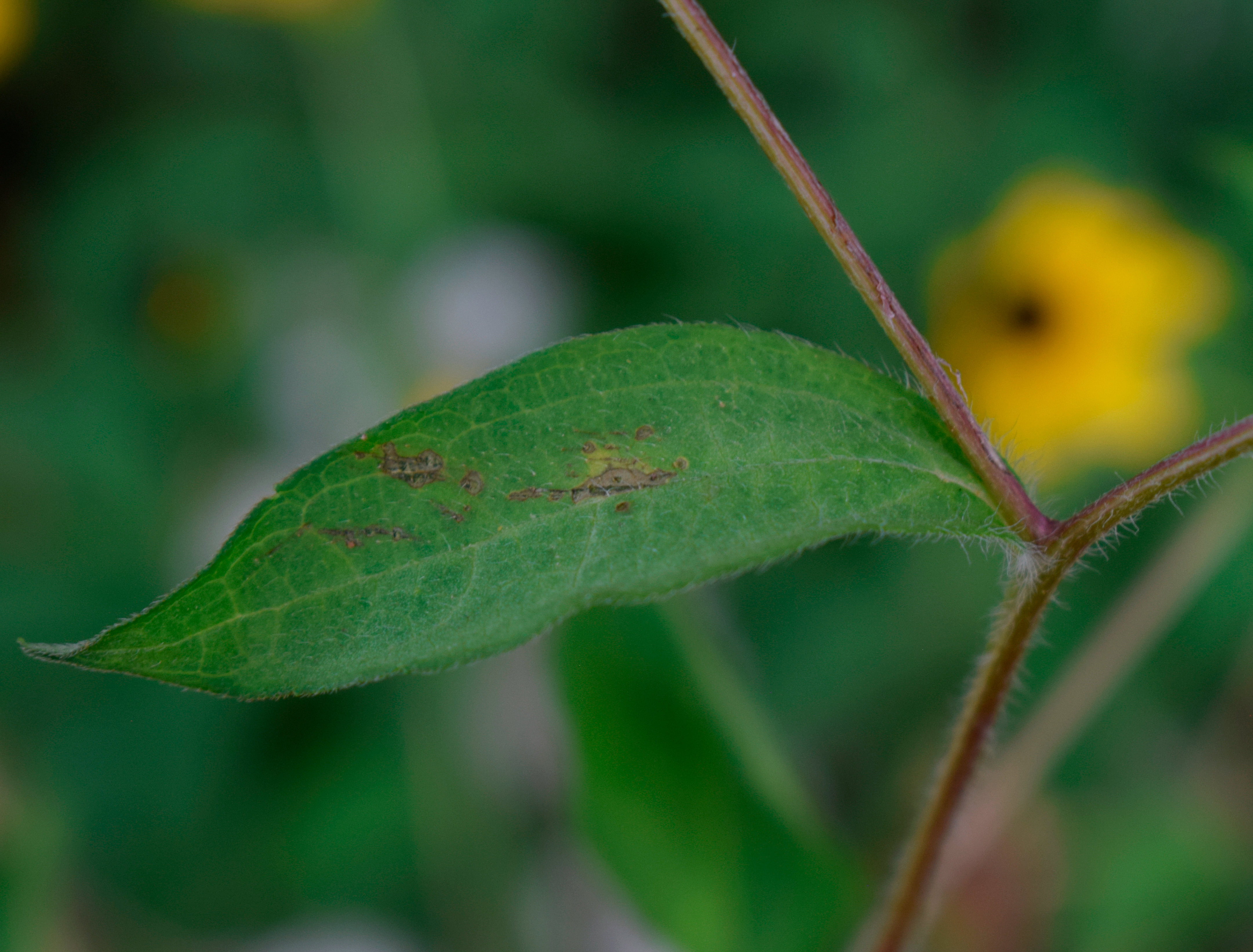
Rudbeckia subtomentosa
This is the plant we generally refer to a Sweet Coneflower, and like R.triloba, it has lobed leaves; however the flowers are much larger and with more petals, and the central disc can look reddish purple. Leaves and stems are densely covered with short hairs, making them rough to touch and somewhat grayish in color. In fact, the word tomentose is a botanical term used to describe dense matted wooly hairs, making this plant somewhat (sub) tomentose.


Rudbeckia laciniata
This is the tallest of the Rudbeckias, and goes by the name of Cut-leaf Coneflower or Wild Goldenglow. The central disk tends to be green/yellow in color rather than black/brown, and so the plant looks more like wingstem than Rudbeckia. As the name may suggest, cut-leaf coneflower has divided and lobed leaves (unlike wingstem) and has a smooth stem (unlike the other Rudbeckias). This plant is not present at Oakhurst, so the photos are not mine.


Rudbeckia fulgida
This is the perennial commonly referred to Orange Coneflower, and there are three varieties in our area (var. fulgida, sullivantii, and speciosa) - so it gets a little confusing. As well as reproducing by seed, they also spread underground by stolons. Given that the species I was trying to identify at Oakhurst appears to be clonal in nature, this is the most likely suspect.
What initially confused me was that I believed I had several R.fulgida plants in my garden, but they were nothing like the ones at Oakhurst. Turns out I was correct, with the one in my garden being Rudbeckia fulgida var. sullivantii, and possibly the Goldsturm cultivar to boot. This common garden variety is clump forming, with dark green leaves, toothed margins, and winged petioles that clasps a ridged stem. It actually looks very similar to an Echinacea plant, and I am forever mistaking the two when they emerge in spring.


I am not entirely sure which of the other two varieties is ay Oakhurst, but I am leaning towards R. fulgida var. fulgida; the Flora of the Chicago Region list this variety as being adventive from further south, while the other is a local conservative species. Further south could simply mean southern or central IL, so the word "adventive" is not something to worry about, especially when factoring in climate change.
The key separating fulgida from speciosa describes the leaves as elliptic (3x longer than wide) rather than oval (x2), and petals (ligules) no more than 2cm rather than longer.



So to recap:
| hirta | fulgida | subtomentosa | triloba | laciniata | |
|---|---|---|---|---|---|
| Lobed Leaves | NO | NO | 3 Lobes | 3 Lobes | 5-7 Lobes |
| Stem | Hairy | Hairy | Hairy | Hairy | Smooth |
| 12 Petals or More | YES | YES | YES | NO | YES |
| Center Disk | Black | Black | Reddish purple | Black | Yellow |
| Bracts | Hairy | Smooth, Ciliate | Smooth |
Species, Subspecies, Varieties and Forms
With all this talk of varieties, perhaps we should explain what they are. I am assuming everyone knows what a species is - textbook definition being a group of organisms that breed amongst themselves and produce fertile offspring. Closely related species can occasionally interbreed, but the offspring are usually sterile; the classic example being the horse and donkey producing a mule. In botany, we call such interspecies offspring hybrids. That said, given that humans can have up to 4% neanderthal DNA, and later neanderthals appeared to have human Y chromosomes, the whole sterile offspring between different species is...complicated.
In any species, there is always going to be some genetic variation, resulting in different physical characteristics but not enough to be considered a separate species; in botany these are described as subspecies, varieties and forms. Subspecies are more likely to arise due to genetic isolation, that is, when there is a physical barrier between different populations that prevents interbreeding. This could be an ocean, a desert or mountain range that individuals cannot cross. However with varieties, the range of each population will often overlap. The term form is below that of variety, and is usually for some minor morphological difference that varies from the norm, such as the color of a flower. If this was applied to humans, then individuals with blue eyes or blonde hair could be considered a form.
When it comes to writing out a subspecies, the preferred way is follow the species name with the abbreviation subsp. and the subspecies name. For example, Euphorbia characias subsp.wulfenii. Noticed that the convention is to capitalize only the genus, and italicize the scientific names except the abbreviation (If you were handwriting in an age before computers, then you would underline in place of italics). As for variants, the convention is similar, Rudbeckia fulgida var. sullivantii, only this time with the abbreviation var.
Some authors may abbreviate subspecies as spp., and the abbreviations may be left out altogether. You may also see some variants and subspecies written out as if they were species such as Rudbeckia sullivantii. The sad truth is, there is not always a consensus on the correct name of every plant; case in point is the American Black Elderberry, which is treated as Sambuccus nigra subsp. canadensis by the British Kew Gardens, while some American botanists treat it as its own species Sambuccus canadensis. Worse yet is the American cranberrybush, which has been described as a species Viburnum trilobum, a subspecies Viburnum opulus subsp. trilobum and as a variant Viburnum opulus var. americanum. Confused? Join the club!!

 Volunteering
Volunteering Safety
Safety Wildlife
Wildlife Newsletter
Newsletter